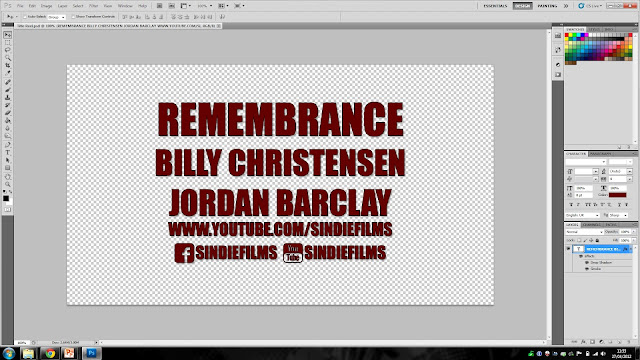Textual Analysis – Tears – Horror
Representation
·
Very little to talk about in the first two and
a half minutes of the film – occupied by credits.
·
There is no male presence in the first four
minutes and the supposed antagonist (ghost/zombie) is female, indicating a
strong, heavily female dominated film.
Represents the little girl as helpless and
vulnerable. She doesn’t run away from the ghost, but bravely and intriguingly
stares at it, slowly backing off, which is a positive representation of brave
children.
Editing/Camerawork
·
The first scene is a two minute credit
sequence. Shot type does not seem to apply but there are some clouds very
slightly visible in the background, possibly a panning shot.
·
The titles and credits fade in and out eerily
as if they themselves were ghosts. This subtly helps to establish the horror
genre. This flows well with the slow instrumental orchestral music and immerses
the audience.
·
The editing is subtle and hard to spot. The
film was produced on a budget of 10k so there isn’t much CGI apart from the
seemingly animated tears behind the titles and beams of light. These link with
the film title and help to establish and convey the horror genre.
·
The jump cut when the ghost goes to grab the
girl’s neck is sudden and scares the audience with it’s sudden, spontaneous and
unexpected appearance. It also jump cuts towards the camera at the end of the
clip.
Sound
·
The sound is parallel and non-diegetic although
there is no ‘actor’s world’. The orchestral nature of the music gives it an
eerie feeling that should make the audience feel tense. This also helps to
convey the genre and also builds up to the opening scene.
·
In the first scene of the girl swinging on the
swing, synchronous sound of wildlife ad nature is used. The reason is unclear
as it bears no strong links to horror, but it does set the scene and makes the
little girl seem separated and alone. This sound becomes quieter and an eerie
ghostly noise fades in when the ghost appears on the camera. This interrupts
the tranquil mood with its presence.
Mise En Scene
·
The scene is set in an empty, secluded light
forest area. The costume of the girl is white connoting happiness and freedom
whereas the ghost is completely black and shadow in a dirty white shirt. The
colour connotations help the audience to tell who is who in this genre of film.
·
The blood on the ghost and dirt on the shoes
of the child add dirty details to enhance the gritty presence in the film. It
is a rarity to see perfectly clean characters/clothing in a horror.
How is the genre established?
The clip opens with a two and a half minute
credit sequence accompanied by synchronous non-diegetic sound that builds and
adds atmosphere. During this time it is possible for the audience to make the
connection that it is a horror film, due to the presence of the sound and
presentation of the ghostly text effects and tears running down the screen.
When the sequence ends, it fades to black and then fades back into the first
scene of a girl on a swing set, alone in a forest. The camera peeks through
some trees, giving the audience the idea of a 1st person
perspective, and also cuts to a close up of the swinging rope. This relates to
being hanged. This is reinforced by the shot of her feet barely scraping the
ground.
The camera cuts to a long shot from the side
of the girl swinging as a dead body swings in to view, hanged from the neck.
The sound reaches a crescendo and the body falls to the floor and reaches out
to the girl, with the sound now extremely eerie and terrifying. The camera cuts
to an extreme long shot/establishing shot of the ghost walking towards the
camera, then jump-cutting into the camera fading to black. This connotes the
horror genre with the use of blood and gore, symbolism of hanging, and dark
music.
Credit to Jordan Barclay.














































